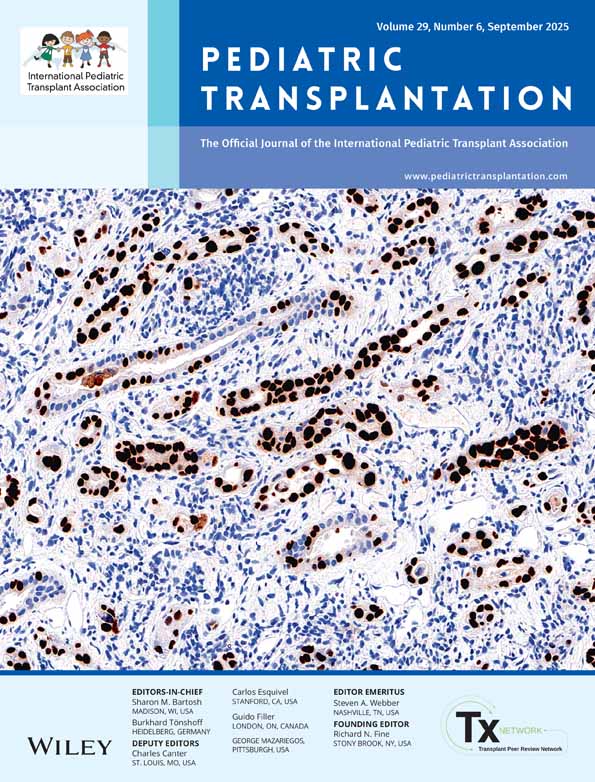Living related small bowel transplantation in children: 3-dimensional computed tomography donor evaluation
Abstract
Abstract: The evaluation of the small bowel vascular anatomy of living small bowel donors (LSBD) is usually performed with conventional angiography (CA). Recently, angio computed tomography (CT) has become a valid study of the vascular anatomy for kidney and liver living donors. We studied the applicability of angio CT with 3-D reconstruction (3-D-ACT) in the evaluation of LSBD. Potential LSBDs for pediatric transplant underwent both CA and 3-D-ACT to evaluate the anatomy of the distal branches of the superior mesenteric artery and vein. Angio-CT was performed with General Electric Lightspeed Scanner. The 3-D reconstruction was performed on the TeraRecon workstation. Adverse reactions, contrast dosage, test duration, invasiveness, hospital-stay, patient discomforts and accuracy were evaluated. Four potential donors (four female; mean age: 30.5 yr; mean BMI: 28.4) underwent both tests. Adverse reactions correlated to contrast agent used (90 mL CA, 150 mL 3-D-ACT) were not reported. CA required a hospitalization of 6 h as opposed to immediate discharge after the 3-D-ACT. The CA required the placement of transfemoral catheter and therefore greater patient discomfort than with 3-D-ACT. The 3-D-ACT arterial images were rated as equivalent to CA, however, 3-D-ACT venous images were rated better than the CA in all cases. CT-angiography with 3-D reconstruction is an acceptable method for vascular evaluation. When compared with routine angiography, it is less invasive, better tolerated and faster, but does require a significantly greater volume of venous contrast. 3-D-ACT also offers a better evaluation of the venous phase, and thus may become the test of choice to evaluate the vascular anatomies of LSBD candidates.




